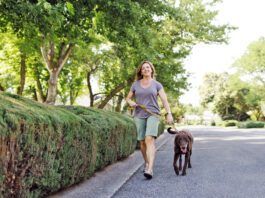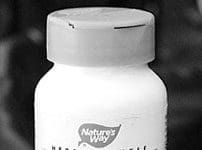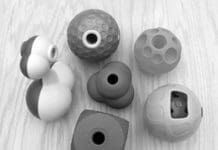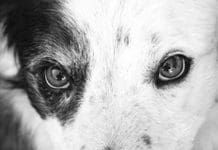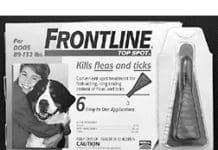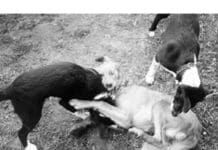Finding a Balance Between Conventional and Holistic Dog Care
I’ve heard many stories from people who use holistic practices and get tired of being pressured by their conventional veterinarians to (over) vaccinate, use (sometimes harmful) drug therapy as a first (not last) resort, or feed their dogs a commercial (low-quality) kibble. Sometimes, in an effort to find more sympathetic veterinarians, these caring guardians replaced their conventional primary practitioner with a holistic veterinarian – only to be disappointed by this professional’s resistance to useful conventional medicine!
The Value of the Harness as a Basic Positive Training Tool
The harness is routinely used for certain canine activities such as carting, mushing, tracking, and guiding the disabled. It is also an important accessory for the canine seat belt, since it’s not safe to restrain your dog by his collar in a moving vehicle. Oddly, there isn’t much talk about the value of the harness as a basic positive training tool. With all the justifiable concern about the risk to a dog’s throat from pressure, or worse, jerks on a collar, it would seem that harnesses might find greater favor with positive trainers.
Slippery Elm for Dogs: Safely Treat Irritation
Slippery elm (Ulmus fulva) is one of the safest herbs commonly given to dogs, and one of the most beneficial. Herbalists attribute many wonderful healing properties to slippery elm: demulcent (soothing, mucilage-forming), emollient (soothing and protective for skin), nutritive (providing specific nutrients), tonic (promoting healthy function of one or more body systems), and astringent (constricting, binding, or drying effect). It can be used both internally and externally. Slippery elm is one of the herbs used in the original formulation of Essiac
Pesticides and You
Never, in the five-year history of WDJ, have we published an article that got our readers’ attention – and divided them into two disparate...
Treat-Dispensing Dog Toys
Interactive toys that require your dog to do something to make the toy pay out food treats are a great invention. They can assist with behavior modification programs and help to keep your dog busy, out of trouble, and well-behaved in your home. The more time your dog spends pursuing one, the more energy she expends in your absence, the more tired she is by the time you get home. And a tired dog is a well-behaved dog. First on the interactive scene was the Buster Cube, followed by the Roll-A-Treat Ball, now joined by a whole host of other interactive products. We decided it was high time to compare some of these treat-dispensing toys to see which ones can give you and your dog the most value.
Older Dogs and the Onset of Cataracts
Cataracts make the lens of the eye opaque or cloudy, which gradually reduces vision to the point of blindness. In their early stages, cataracts cause blurring and distortion of vision, but they are invisible to the naked eye. By the time most owners notice them, cataracts involve more than 60 percent of the dog's eye. Cataracts often accompany other illnesses, such as diabetes and hypothyroidism (low thyroid function). Surgery performed by a veterinary ophthalmologist is the only treatment considered effective in conventional veterinary medicine and is indicated only in cases where the cataracts are not a result of a secondary disease such as diabetes.
Drinking the Purest Water Possible is Important to Your Dogs Health
Water plays a critical and complex role in the health of all mammals, constituting 55 to 75 percent of the body mass of warm-blooded creatures. A fetus develops in its mother’s amniotic sac and, from birth till death, water bathes and fills every one of a mammal’s billions of cells. In essence, the bodies of people, dogs, and other mammals are water-cooled engines. Releasing water vapor by panting and sweating through its paw pads induces gentle cooling in a dog’s body. Water also lubricates a dog’s joints and muscles, cushions the spaces between each individual cell, and fills up all of the minute hollows in a dog’s body. The principal element of blood, water transports oxygen to all canine body tissues, and helps the white blood cells produced by a dog’s immune system move about its body and fight infections.
Eliminate Fleas Without Poisons
Today, spot-on flea products are advertised in every sort of media available to animal guardians and veterinarians, and are touted as safe and effective. However, the safety record of these products is not as spotless as the manufacturers would make us believe. After all, they contain pesticides, which are poisons, and they also contain toxic ingredients that are not disclosed to consumers or even veterinarians without applying through the Freedom of Information Act. The danger presented by these products is apparent in the hundreds of incident reports that sit in the Environmental Protection Agency's files not to mention the manufacturer's own animal laboratory studies.
Dangers of Spot-On Pesticides for Fleas and Ticks
Some people will never give up their use of spot-on pesticides, despite the health risks to themselves and their dogs. I know you're out there, and I understand. Perhaps you have a dog with a flea allergy so severe a dog who scratches and chews himself so badly that he develops severe hair loss, hot spots
Post-Exercise Accupressure for Active Dogs
If your dog shows signs of acute pain or distress, we encourage you to take him to your holistic veterinarian. Acupressure is an excellent resource and complement to your dog’s health care since you can perform treatments yourself, but it is not a substitute for veterinary care. Your dog will enjoy playing, running, jumping, weaving through poles – whatever your sport – much more if you help take good care of his body. Acupressure is safe, always available, drug-free, and dogs love the touch of their special people.
Are Topical Flea Killers Safe?
The newest generation of pesticides are being marketed as far less harmful than the old ones. But they are deeply misrepresented as harmless.
Making Peace With Death
One great and inescapable sorrow awaits all of us who share our lives with dogs: Sooner or later we shall have to face the decline and death of our beloved companions. Painful though it is to contemplate this loss, ask yourself the following question: If it were within your power to provide it, what sort of death would you wish for your dog? Chances are, you would wish him the same death as you would wish yourself: to die when he is ready, peacefully in his sleep, at home, in bed, surrounded by loved ones.



